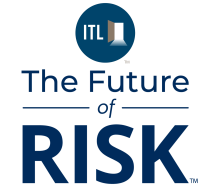Employee Retirement Income Security Act (ERISA) lawsuits have experienced a fever pitch, with 136 new cases coming to light in 2024, a shocking 183% increase from the previous year. This trend seems likely to continue into 2025, as new ERISA-related lawsuits filed against Southwest Airlines and Charter Communications were brought forward. While these legal actions are becoming prominent, the ERISA legislation experienced a milestone, recently celebrating its 50th anniversary, further indicating the endurance of this law and its strong framework in protecting employee benefits and emphasizing the need for clear guidelines of fiduciary duties for those managing retirement plans.
2025 and beyond will be high stakes for employers and companies that are maintaining retirement plans for employees, otherwise known as plan sponsors. Risk mitigation and contingency planning for protection of individuals and companies are essential.
A new consideration for plan sponsors?
ERISA, major federal legislation that took effect Jan. 1, 1975, governs employee benefit plans of almost all types, and holds fiduciaries – as broadly defined – personally liable for plan administration and management. It has evolved over the years to ensure it is up to date with market changes and retirement planning requisites to better support employees. Inherently, it is a long and complex legislation with numerous nuances that contribute to plan sponsors' challenges in maintaining compliance. Recent class action litigation indicates that there are standout fiduciary areas where plan sponsors are struggling – including 401(k) plan forfeitures in defined benefit plans, pension risk transfers (PRTs) and health plans, as well as who bears administrative costs for these plans.
Most current lawsuits challenge how forfeiture in 401(k) plans is handled, and the outcome could have significant repercussions for the sponsor community. Typically, forfeiture funds are those contributions associated with employees leaving their jobs before fully vested in their employer's contributions to their 401(k) plans. Plan sponsors can use these forfeited funds to offset their contributions. However, many lawsuits argue that ERISA requires these funds to be used solely for plan expenses or redistributed to plan participants. While the verdict is still out on the court ruling, one thing is for sure – should the plaintiffs come out victorious, there could be a massive shift in forfeiture policies.
In the same vein, PRT-related cases are under the spotlight. PRTs have long been leveraged as a favorable strategy by employers to eliminate their pension obligations and associated risks. Plan sponsors have typically conducted transfers to an insurance company through an annuity purchase or a lump-sum buyout. Yet recent court cases indicate that the tides may be turning as plaintiffs have filed a handful of cases alleging that these annuities are too risky and thus fail to meet ERISA fiduciary requirements. This is another area that plan sponsors would be wise to watch, as the outcome could result in higher standards for PRTs.
Health plan litigation is another area of concern for plan sponsors. In 2024, class actions against health plans were all over the spectrum, from actions on health-based wellness programs to how plans choose to provide pharmacy benefits to their employees, particularly their choice of pharmacy benefit managers. Plan sponsors should be keen on keeping up with the effects as they can broadly affect their programs and require significant adjustments.
The impact of an ERISA-based lawsuit
Legal issues are never on the agenda for businesses, as they bring forward an onslaught of consequences, but ERISA-related lawsuits can play a particularly malignant role in an organization's continued growth and success.
Firstly, the short- and long-term financial strain can be debilitating. ERISA lawsuits incur mountains of legal costs – from attorney fees, settlements, and more – potentially reaching well into the seven-figure range. Additionally, under ERISA, plan sponsors may face personal liability for confirmed fiduciary breaches, potentially leading to civil penalties, removal of fiduciary status, or criminal prosecution.
Companies should also be wary of the reputational damage an ERISA lawsuit can cause. Stakeholder trust can be eroded following a lawsuit, making it challenging to hold onto and attract new investors. Similarly, talent attraction and retention are heavily affected. Employee benefits and retirement planning support are now expected by employees. If marked by an ERISA-related lawsuit, top talent may look for other organizations that meet their long-term financial wellness needs. By losing top talent, businesses will struggle to maintain and grow their business performance.
These examples of potential impacts underscore the importance of companies and plan sponsors effectively managing ERISA compliance and fiduciary responsibilities. The best way to mitigate these issues and their impact is to avoid falling victim to alleged breaches and staying alert about legal rulings. However, given the complexities and nuances of ERISA, it can be challenging to keep pace. Realistically, plan sponsors and businesses must be prepared to address potential issues from all angles.
The need for fiduciary liability insurance
Plan sponsors may be aware that bonds are required by ERISA; however, their protection is limited to fraud and dishonesty. For comprehensive risk management and to better navigate the growing trend of litigation, fiduciary liability insurance should be at the top of the list for fiduciaries and their organizations. Typically sold in increments of $1 million, this insurance offers valuable protection against allegations of improper judgment related to employee benefit plans, including, most importantly, covering legal defense and even settlements.
While it is understandable that concerns about costs exist, neither the mandatory ERISA bonding nor the optional fiduciary liability insurance should be seen as expensive. Considering the backdrop of regulatory fines and penalties from the Department of Labor for non-compliance and the increasing cost associated with defending against litigation, the cost of insurance is quite reasonable.
The protection from this coverage extends to the sponsoring organization, officers and directors, and plan fiduciaries. As ERISA holds individuals with discretionary authority over retirement plans personally liable for decisions that harm employee beneficiaries, fiduciary liability insurance provides essential protection.
Additionally, firms should enhance their compliance processes by leaning on technology-driven solutions to stay current with new ERISA provisions and automate wherever possible. Leveraging tools and platforms that can support tracking vesting schedules and contributions reduces human error and oversight, often the drivers of fiduciary breaches. Furthermore, digital-first solutions can support generating audit-ready reports if needed to demonstrate ERISA fiduciary duties are being met.
Navigating the future of fiduciary risk
The long-term success of ERISA demonstrates the effectiveness of its framework in protecting American workers' retirement plans. As new retirement trends emerge, market volatility increases, and regulations evolve, there will be a continued emphasis on risk mitigation and compliance. It is crucial for plan sponsors to stay updated and not fall behind in these areas. They must remain vigilant in managing funds in accordance with ERISA, especially as legal scrutiny intensifies.
However, due to the complexity of ERISA, it is not uncommon for gaps to arise. A significant aspect of risk mitigation involves preparing for the worst-case scenario, particularly in facing potential allegations of fiduciary breach. Robust defense plans should include solid fiduciary liability insurance, monitoring evolving regulatory frameworks, and updating/automating compliance practices. Only then can organizations and plan sponsors have the peace of mind to run excellent plans for the sole interest of participants and beneficiaries, which in turn benefits themselves and the organization.








